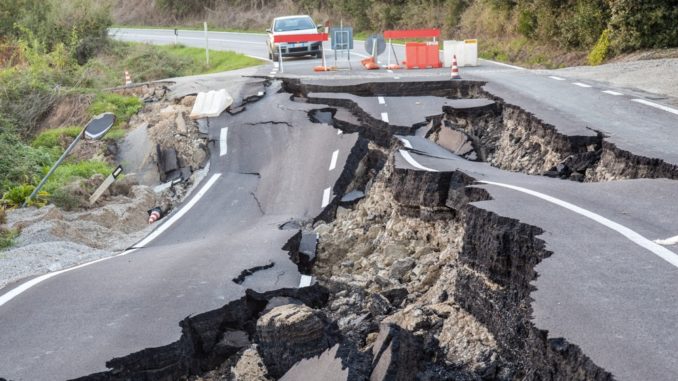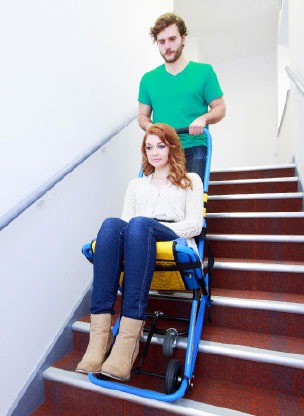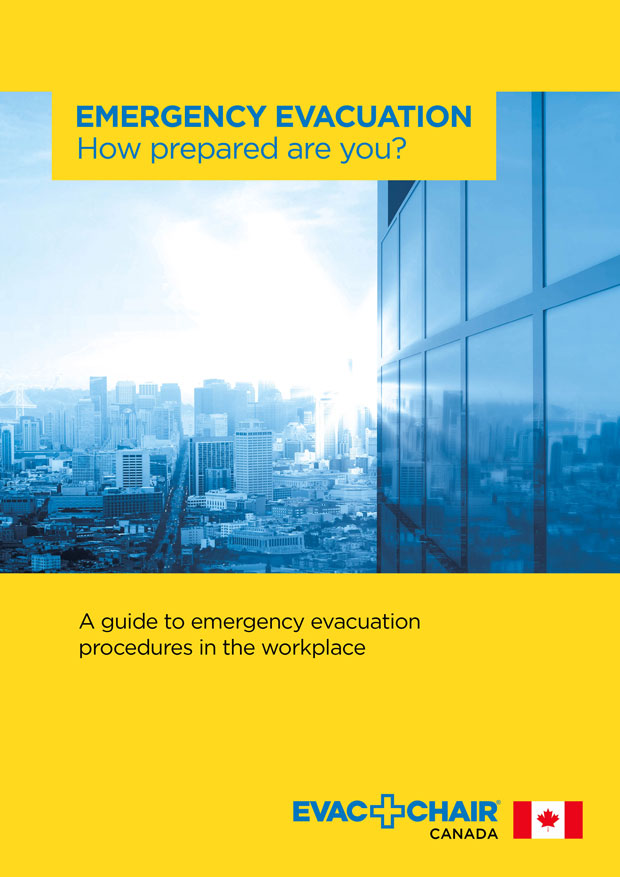EVACUATING CORPORATE FACILITIES

IS YOUR BUSINESS PREPARED FOR EMERGENCY EVACUATION?
Why we need an evacuation plan
Nobody expects an emergency or disaster – especially one that affects them, their employees, and their business personally. Yet the simple truth is that emergencies and disasters can strike anyone, anytime, and anywhere. You and your employees could be forced to evacuate your company when you least expect it.
With the current unpredictable climate of terrorism and violence, along with fire and weather emergencies, effective emergency evacuation plans are vital. Extra precautions and considerations need to be taken into account to accommodate the individual needs of staff and visitors with physical disabilities, those with sensory disabilities, and those who may lack understanding of a situation or be able to act quickly.
Identifying and preventing risk is a crucial part of emergency planning in the workplace and should never allow leaving anyone behind because they are differently abled. Pre-planning for a workplace emergency is imperative in today’s world. Workplace facilities must have the capacity to move all persons with disabilities to a safe location immediately in any emergency situation. Sheltering in place and waiting for first responders to arrive and rescue may not be safe or the best option. Robust emergency and evacuation planning should be implemented and comprehensively written with specific needs of individual staff requirements.
This plan should insure and include:
• Full risk identification and prevention
• Drills (identifying obstacles as they arise and before an emergency occurs)
ª Equipment required and its usage
• Training needs
• Post drill evaluation to inform any changes necessary etc.

Staff and visitors with disabilities can also be at risk. Business administrators and staff should develop a plan to necessitate provisions and share the information with all people concerned. Through the entire process, the facility has a moral, ethical and legal responsibility to keep their whole community safe in the event of an emergency.
DOWNLOAD OUR COMPLETE GUIDE TO EMERGENCY CORPORATE EVACUATION
Includes advice on:-
PLANNING CONSIDERATIONS
EVACUATION STRATEGIES
EVACUATION PLANS (GEEPS/PEEPS)
EVACUATION EQUIPMENT
PLUS AN EVACUATION CHECKLIST
DISASTER SITUATIONS CAN HAPPEN ANYTIME, ANYWHERE.......

......SO IN THE EVENT OF AN EMERGENCY, CAN YOU EVACUATE SAFELY?
Hightened awareness of terrorism and natural disasters mean building evacuation plans are on many manager’s minds. By Law, organisations need to make physical provision for everyone to escape, including the mobility impaired.
Evac+Chair® is a pioneer in its field, yet offers a simple, safe and cost effective solution.
The chair uses continuous rotating v-belts to provide controlled stairway descent, enabling a single user to evacuate a mobility impaired person, without lifting or need to alter the building fabric. For ‘intelligent buildings’ such as the Petronas Towers in Kuala Lumpur, Evac+Chair would have been invaluable when it took 5000 personnel over one and a half hours to evacuate after a bomb hoax.
Evac+Chair® is equally important for escaping those buildings directly affected by the event as well as for surrounding buildings indirectly affected through power failure and other intrusions.
Evac+Chair® enables a single user to easily evacuate a person with mobility difficulties from a building in the event of a disaster.
EVAC+CHAIR EVACUATION CHAIRS

Evac+Chair is a universal evacuation solution for smooth stairway descent during an emergency. Single user operation insures no heavy lifting or manual handling is required during emergency evacuation procedures.
In the event of an emergency such as an earthquake or fire, elevators should not be used in multi-storey buildings, therefore people with a disability or who are injured may become trapped.
Our evacuation chair is the perfect solution; it is a light weight and easy to use device which glides effortlessly down stairways to assist with the quick and safe removal of people who are mobility impaired in the event of an emergency evacuation.



